Ghetto-style spectroscopy: Exploring the spectrum and (without) the dangers of lasers
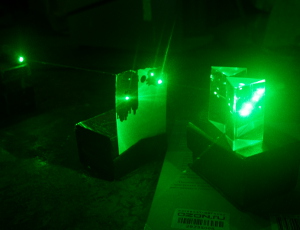 I think everyone who reads this article has played with laser pointers. Recently, the Chinese have been raising radiation powers all higher - and we will have to take care of safety ourselves.
I think everyone who reads this article has played with laser pointers. Recently, the Chinese have been raising radiation powers all higher - and we will have to take care of safety ourselves. On a habr already wrote about spectroscopy (on a kickstarter , and on a knee ), and also about green DPSS lasers ( 1 , 2 ).
Recently, I had the opportunity to check whether it is possible to cut copper foil on a 1W printed circuit board with a green laser (so far the answer is “no”) - but I did not want to risk checking it, without specific information about spurious infrared radiation and how well safety glasses work.
In addition to this, it also turned out on my knee to see the laser radiation spectrum - whether it generates at one frequency, or at once at several. This may be necessary if you want to try recording a hologram at home.
Recall the design of green DPSS lasers
An 808nm infrared laser diode shines on a Nd: YVO4 or Nd: YAG crystal neodymium laser, which emits light already at a wavelength of 1064nm. Then, in a nonlinear KTP crystal, frequency doubling occurs - and we get a green light of 532 nm.
The obvious problem here is that 808nm and 1064nm radiation can exit the laser (if there is no output filter, or it is of poor quality) at an unknown angle, and it’s inconspicuous for us to engage in artistic retinal cutting. The human eye does not see 1064nm at all, and 808nm radiation is very weak, but you can see it in the dark (it is not too dangerous only with scattered radiation at low power!).
Unfocused spurious radiation
First, take a look at the green laser radiation with a camera without an IR filter: The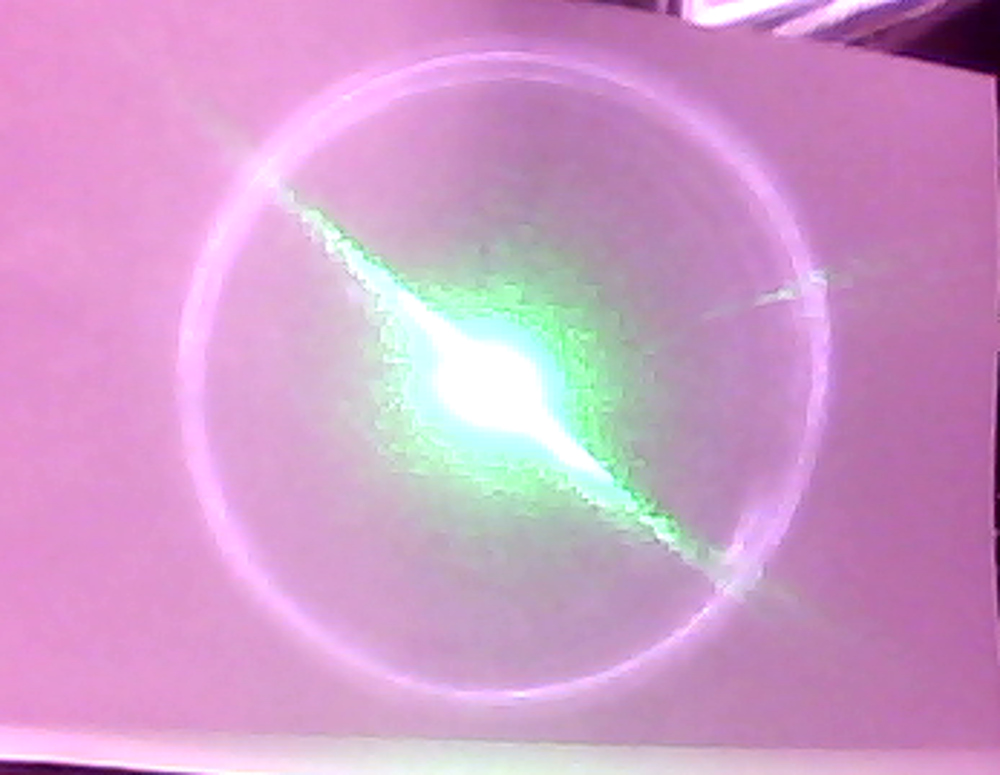
ring around the point is the scattered radiation from an 808nm laser pump diode. If, due to imperfections in the design of the laser, it is too powerful, 1064nm and 532nm may appear there. At high power - this radiation can be dangerous, especially if you do not know about its existence.
However, what is the radiation in the focused part of the laser radiation? Let's try to find out.
First approach: a sheet of paper and a CD
The idea is simple - with a shining laser through a hole in a sheet of A4 paper onto the surface of a stamped CD-ROM . The grooves on the surface of the disk - in a first approximation, work like a diffraction grating, and spread the light into the spectrum. Each wavelength forms several images at once - several positive and several negative orders. As a result, we see the following with an eye and an ordinary camera: However, if you look at a sheet of paper with a camera without an IR filter, we notice a strange lilac dot between the first and second points from the center: This is just a spurious, not filtered 808nm radiation. Unfortunately, one cannot see the point of 1064 nm radiation in this way - it ideally exactly coincides with the second order of 532 nm radiation. What to do?
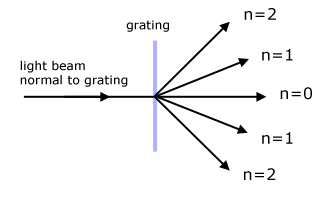
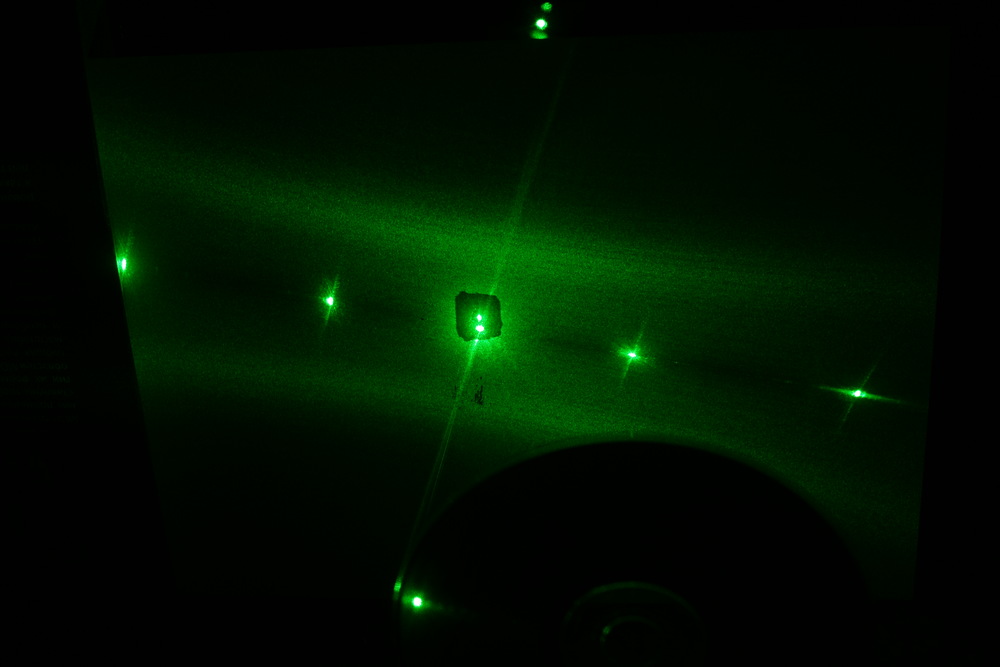
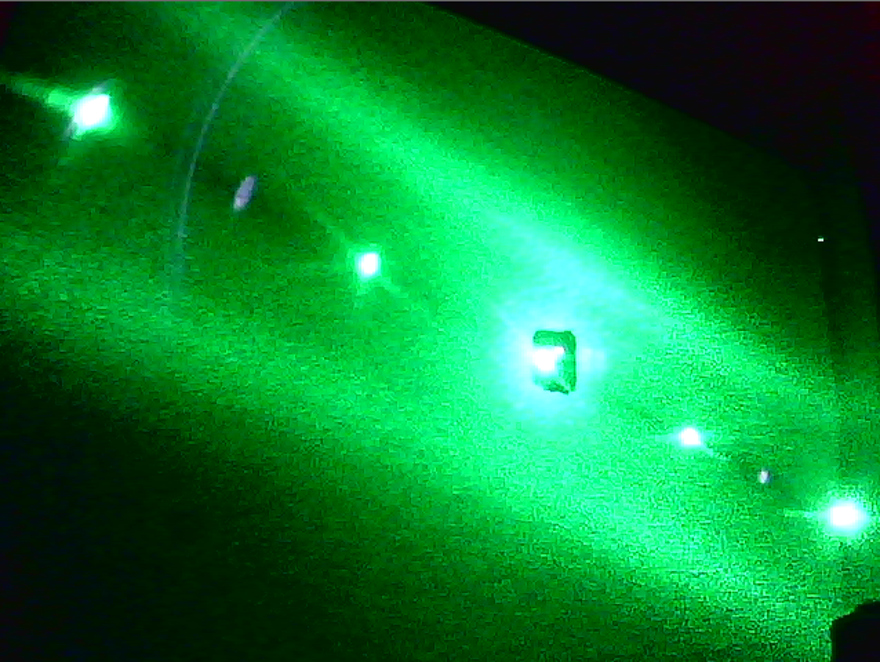
Second approach: dispersion prisms
The prism also decomposes the light into the spectrum, however, the difference in refraction angles for different wavelengths is much smaller. That is why I did not immediately succeed in implementing this option - I continued to see one point. The situation was aggravated by the fact that my prisms were made of ordinary glass, which decompose light into a spectrum twice as bad as specialized ones.As a result, I had to take 2 prisms, and increase the distance to the screen to 2 meters. A sheet of cardboard with a hole between the laser and the prisms - in order to filter out spurious unfocused radiation from the laser.
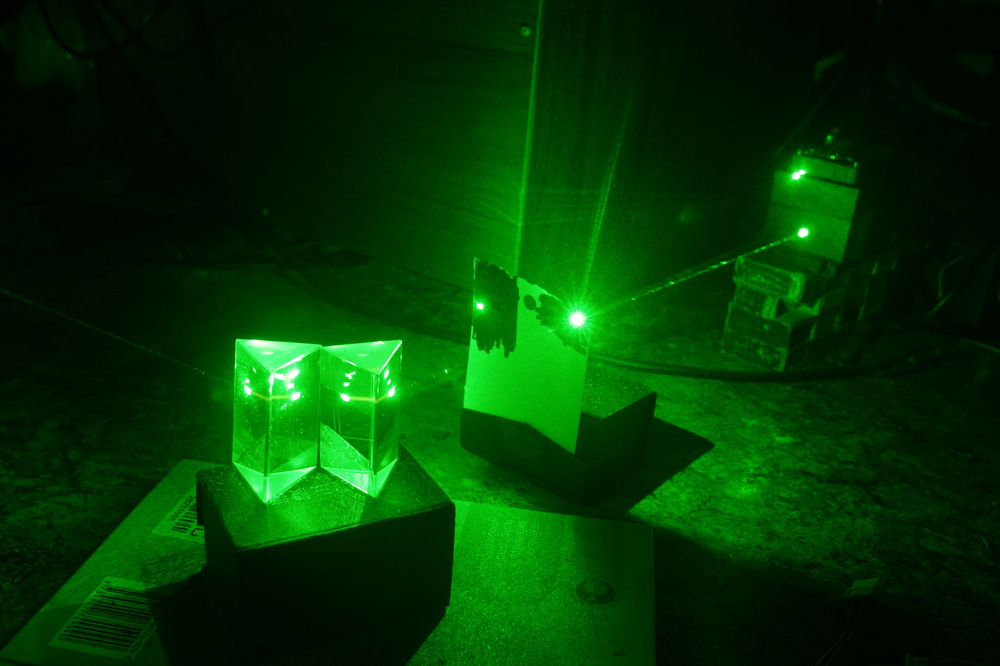
The result is achieved: the points 808nm, 1064nm and green 532nm are clearly visible. The human eye in the place of IR points does not see anything at all.
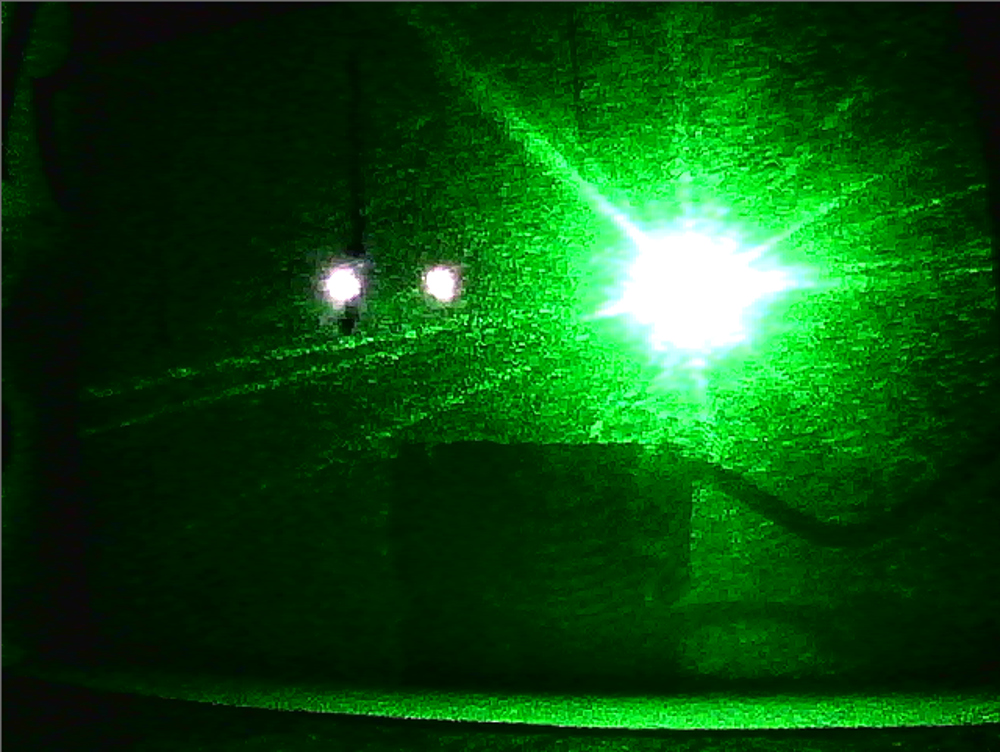
Using a “finger high-precision power meter” (abbreviated PVIM) on a 1W green laser, it was possible to find out that in my case the overwhelming part of the radiation is 532 nm, while 808 nm and 1064 nm are detectable by the camera, but their power is 20 or more times lower than the limit PVIM detection.
It's time to check the glasses
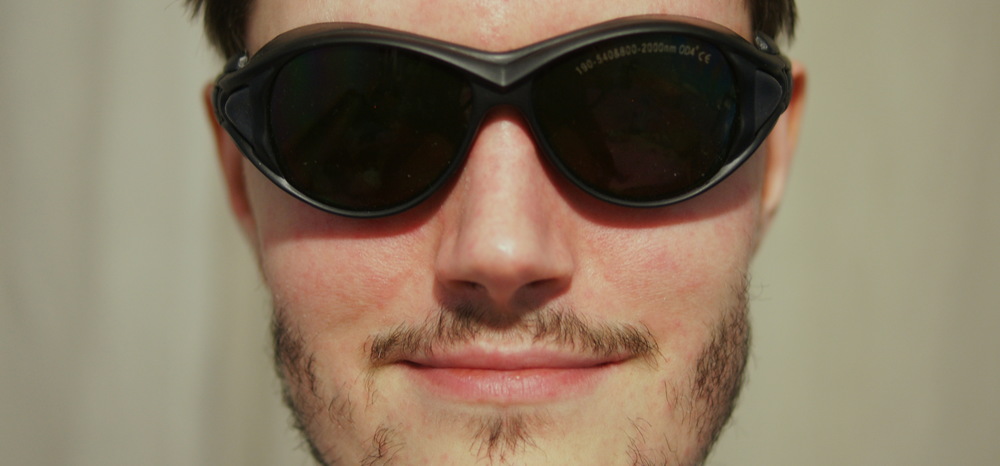
The Chinese promise that attenuation is 10,000 times (OD4) for the ranges of 190-540nm and 800-2000nm. Well, let's check that the eyes are not official.
We put glasses on the camera (if you put it on the laser, it will melt the hole, they are plastic), and we get: 532nm and 808nm weaken very much, from 1064nm it remains a little, but I think it’s not critical:

Out of curiosity I decided to check the color anaglyph glasses (with red and blue glass ) The green half rests well with the red half, but for infrared light they are transparent: The

blue half does not have practically any effect:
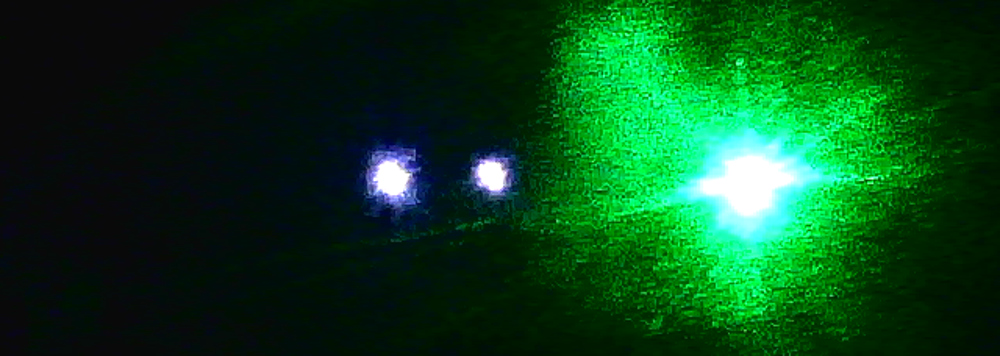
Does the laser generate at one frequency or several?
As we recall, the main structural element of the DPSS laser is the Fabry-Perot resonator , which consists of 2 mirrors, one translucent, the second ordinary. If the wavelength of the generated radiation does not fit into the cavity length an integer number of times, the waves will damp themselves due to interference. Without the use of special tools, the laser will simultaneously generate light at once at all permissible frequencies.The larger the size of the resonator, the greater the possible wavelengths at which the laser can generate. In the most low-power green lasers, a neodymium laser crystal is a thin plate, and often there are only 1 or 2 wavelengths for generation.
With a change in temperature (= size of the resonator) or power - the generation frequency can change smoothly, or in a jump.
Why is it important? Lasers generating light at a single wavelength can be used for holography at home, interferometry (ultra-precise distance measurements) and other fun things.
Well, check it out. We take the same CD-ROM, but this time we will observe the spot not from 10 cm, but from 5 meters (because we need to see the difference in wavelengths of the order of 0.1 nm, and not 300 nm).
1W green laser: Due to the large size of the resonator, the frequencies go with a small interval:
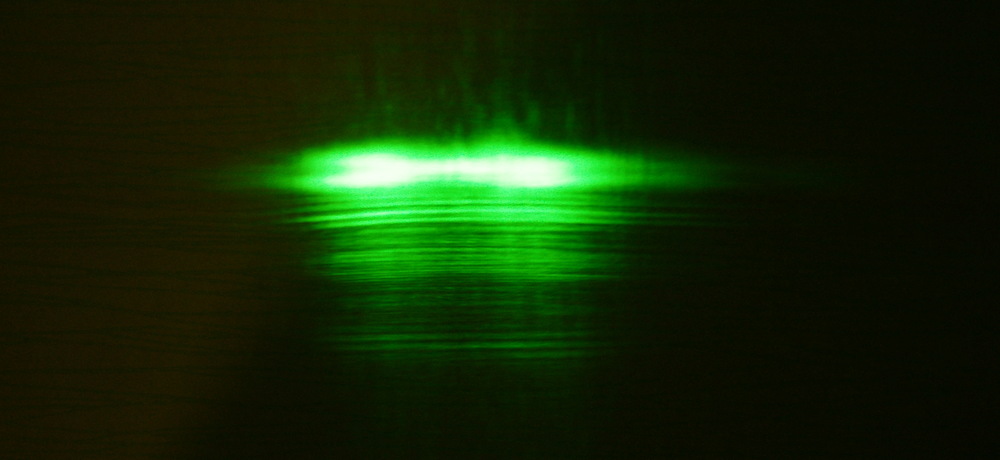
10mW green laser: The dimensions of the resonator are small - only 2 frequencies are placed in the same spectrum range:
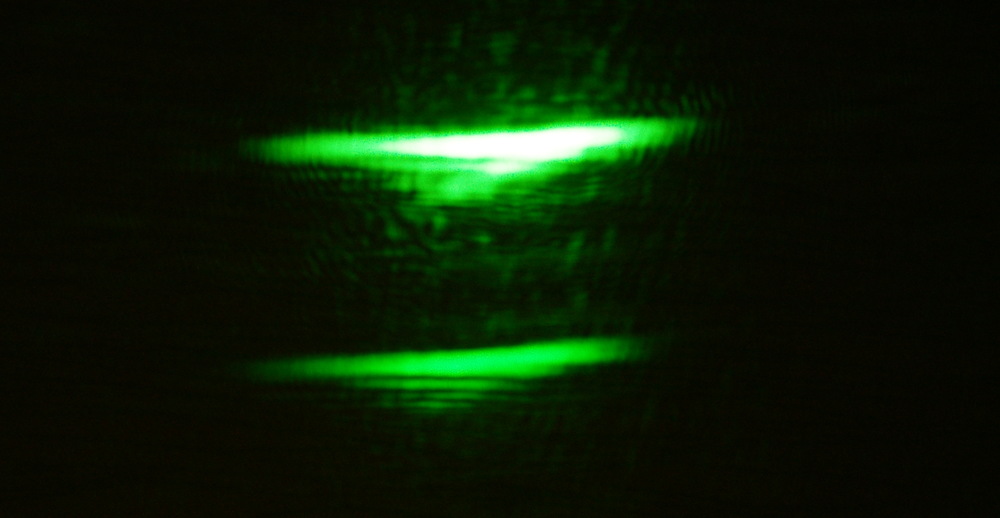
When power is reduced, only one frequency remains. You can write a hologram!

Let's look at other lasers. Red 650nm 0.2W:
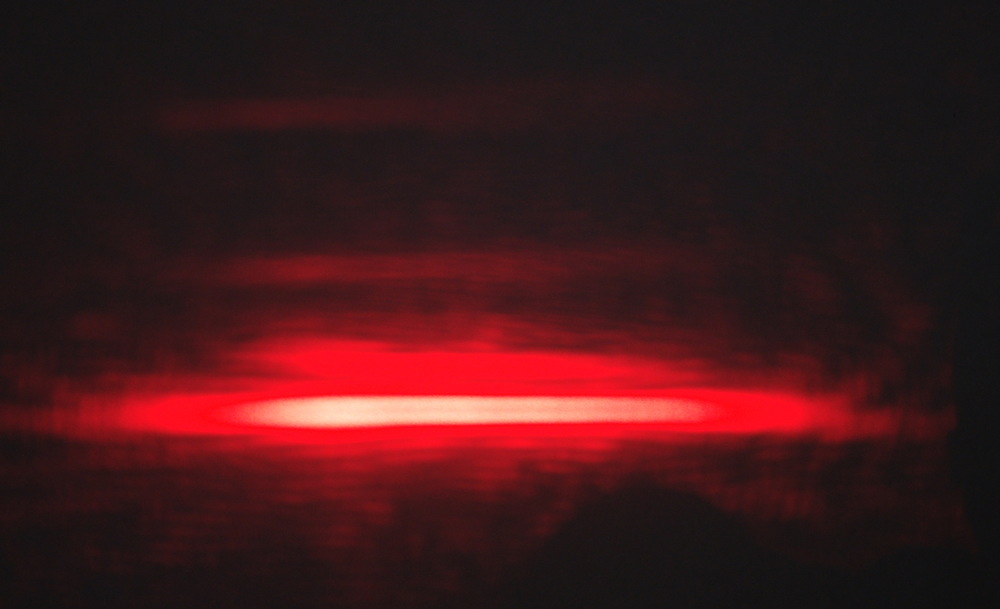
UV 405nm 0.2W:

Summary
- 532nm green lasers - abundantly illuminate everything with infrared light: a wide unfocused beam of 808nm (and with a large spurious radiation power - there will be 1064 and 532nm there), and in the focused spot there are 808 and 1064.
- Hoping for random colored glasses for protection is a crime. They pass this infrared radiation, and you can quietly fry your retina.
- In the field, with only a CD-ROM, it’s quite possible to see the laser radiation spectrum in a scale of 0.1 nm and see if the laser is operating in the single-frequency mode.
So be careful when playing with laser pointers; do not buy excessive power unless absolutely necessary.
May there be coherent light!
